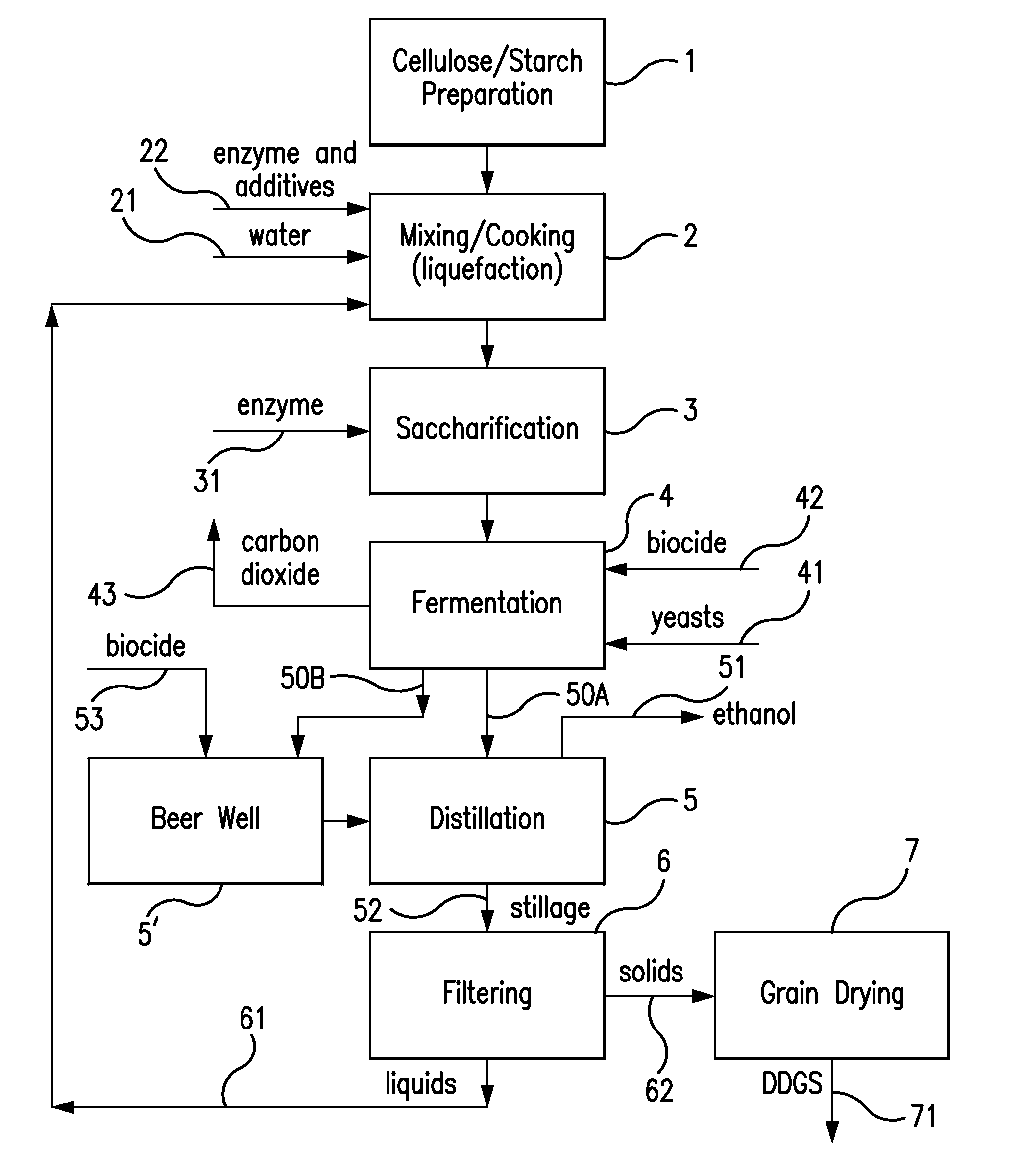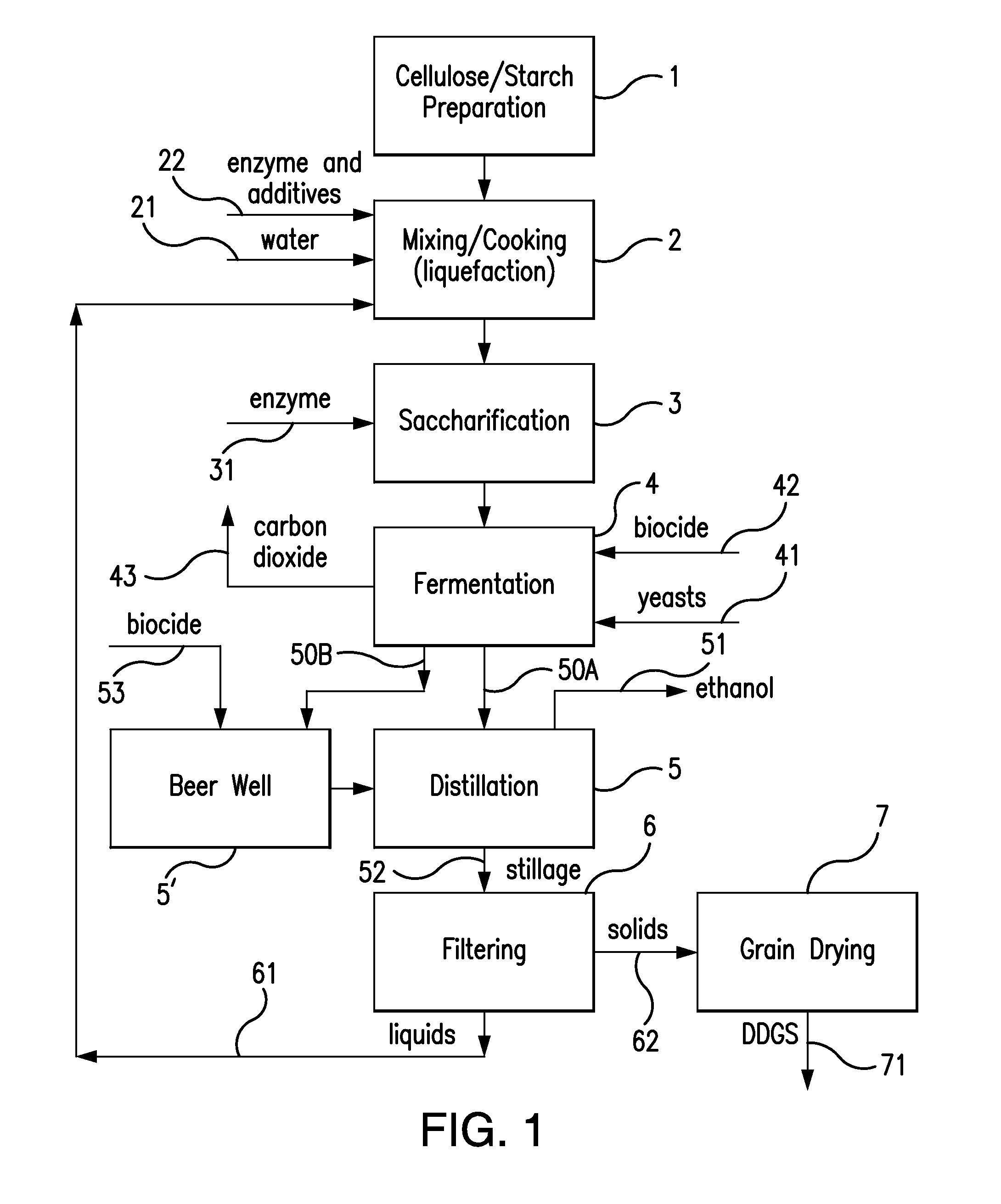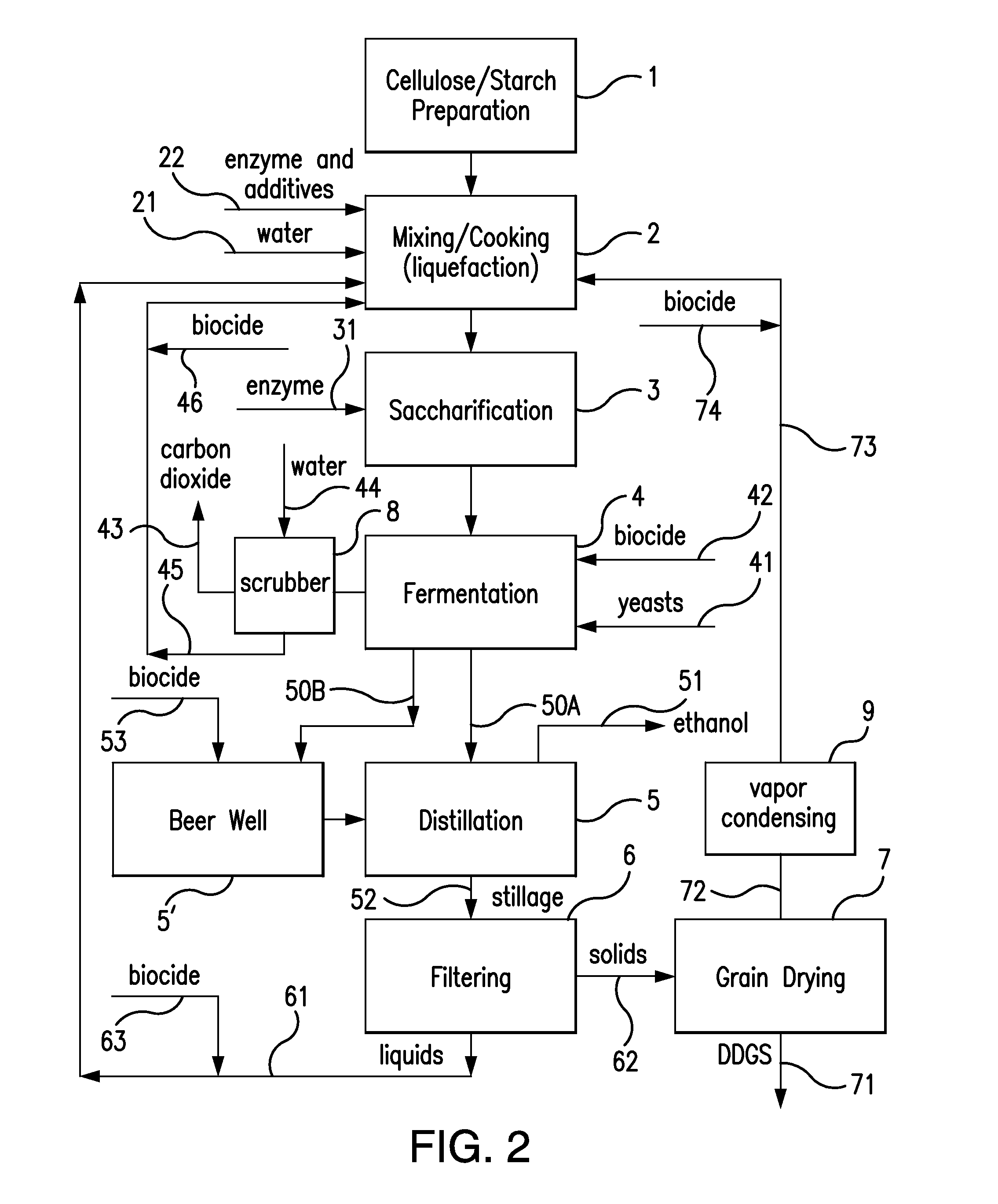Processes Using Antibiotic Alternatives In Bioethanol Production
a bioethanol and process technology, applied in the field of fermentation to produce ethanol, can solve the problems of reducing the production yield of ethanol, and reducing the yield of ethanol, so as to inhibit the growth of bacteria, slow down the growth rate or the bacterial attack rate of fermentation sugars, and maintain a low level of at least one bacteria
- Summary
- Abstract
- Description
- Claims
- Application Information
AI Technical Summary
Benefits of technology
Problems solved by technology
Method used
Image
Examples
example 1
[0096]Experiments were conducted to evaluate the effectiveness of a nonoxidizing biocide as an antimicrobial agent for control of Lactobacillus infections in ethanol fermentation. The nonoxidizing biocide was BRONAM® 20 (20% 2,2-dibromo-3-nitrilopropionamide). The lactobacilli was L. plantarum. The yeast was Saccharomyces cereviseae. Corn mashes containing approximately 30% (w / w) dry solids were used.
Experimental Procedures
[0097]For slurry preparation, the moisture of ground corn was determined gravimetrically using a moisture balance by measuring the mass loss that occurred upon drying. The amount of corn, deionized (DI) water, and enzyme needed to prepare 160 g of corn slurry at a total dry solids concentration of 30% (w / w) for each replicate was determined. For each treatment, three independent replicate slurries were prepared by weighing the required amount of DI water into labeled Labomat beakers, followed by addition of the required mass of corn flour. The alpha-amylase enzyme...
example 2
[0112]Lactobacilli MRS broth (25% strength) was prepared and dispensed in 10 ml amounts into test tubes and autoclaved for 20 minutes at 121° C. The biocides were added to the test tubes in the desired concentrations, and then 100 microliters of an overnight broth of Lactobacillus fermentans were added to the respective test tubes and incubated at 37° C. for 24 hours.
[0113]In this example, a synergistic effect was demonstrated by testing the combination of Nisin, designated as component A, and 2-bromo-2-nitropropane-1,3-diol, designated as component B in a series of tests in varying ratios and a range of concentrations against the bacterium, Lactobacillus fermentans, using the method described above. The results are shown below.
Quantities producing endpoints (ppm)QA / Qa +QaQAQbQBQA / QaQB / QbQB / Qb1.0——————0.1250.10.50.60.25250.250.50.750.25100.250.20.450.5100.50.20.7——50————
[0114]Synergism was demonstrated by the method of described by Kull, E. C., Eisman, P. C., Sylwestrwicz, H. D., an...
example 3
[0117]In this example, a synergistic effect was demonstrated by testing the combination of Nisin, designated as component A, and 2,2-dibromo-3-nitrilopropionamide, designated as component B in a series of tests in varying ratios and a range of concentrations against the bacterium, Lactobacillus fermentans, using the method described above. The results are set forth below.
Quantities producing endpoints (ppm)QA / Qa +QaQAQbQBQA / QaQB / QbQB / Qb1.0——————0.1600.10.60.70.1800.10.80.90.25600.250.60.850.5200.50.20.70.5400.50.40.9——100————
[0118]In the table above, as can be seen, the combination of Nisin with 2,2-dibromo-3-nitrilopropionamide provided synergistic results for the various combinations. This effectiveness would be quite useful for controlling bacteria prior to and / or during fermentations that make ethanol.
PUM
| Property | Measurement | Unit |
|---|---|---|
| time | aaaaa | aaaaa |
| time | aaaaa | aaaaa |
| time | aaaaa | aaaaa |
Abstract
Description
Claims
Application Information
 Login to View More
Login to View More - R&D
- Intellectual Property
- Life Sciences
- Materials
- Tech Scout
- Unparalleled Data Quality
- Higher Quality Content
- 60% Fewer Hallucinations
Browse by: Latest US Patents, China's latest patents, Technical Efficacy Thesaurus, Application Domain, Technology Topic, Popular Technical Reports.
© 2025 PatSnap. All rights reserved.Legal|Privacy policy|Modern Slavery Act Transparency Statement|Sitemap|About US| Contact US: help@patsnap.com



